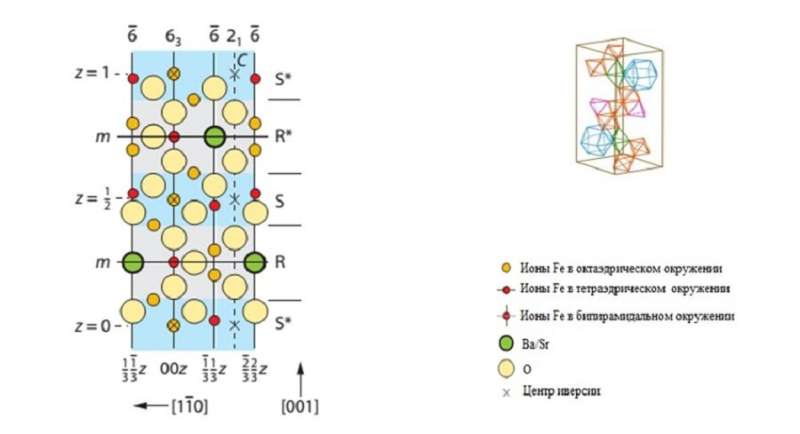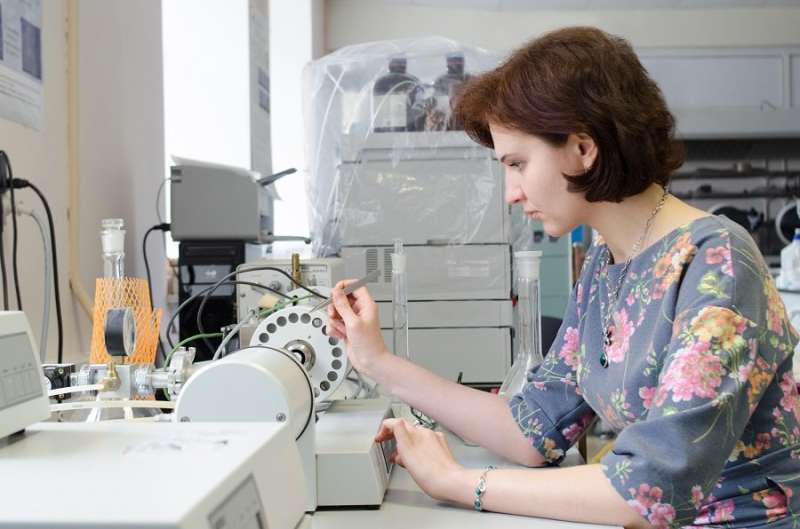Researchers developing materials for quantum computing

Creation of innovative materials is one of the most important areas of modern science. Active development of Industry 4.0 requires new properties from composite elements of electronics. Researches of scientists from South Ural State University are implemented within this area. SUSU's Crystal Growth Laboratory performs modification of properties and structure of ferrites, which are oxides of iron with other metals' oxides. This task is performed by introducing other chemical elements into the structure of barium hexaferrite in order to obtain new working characteristics of the material.
One of the latest research articles dedicated to this topic was published at the end of 2017 in Ceramics International.
"The specificity of ferrite crystal structure is in the fact that it has five different positions of iron in the crystal lattice. This is exactly what allows modifying the structure and properties of the material in a sufficiently wide range. Structure of the initial material changes its properties after introduction of other elements, which expands the possibilities for its use. Therefore, by changing material's chemical composition, we can modify its working characteristics. We researched distribution of indium on positions of the substitute element," says Denis Vinnik, Head of the Crystal Growth Laboratory.
The scientists have a special interest in determining which of iron's positions in the lattice of barium hexaferrite is the most preferential for the new element: properties of the modified material depend on its structure. At the present time, the crystallographic positions that indium will place have been determined. Research is being carried out in the area of studying super-high frequency characteristics and the nature of other various properties of ferrites.

"Our interest to barium ferrites is conditioned by their high functional properties," explains Aleksey Valentinovich. "Chemical stability and corrosion resistance makes these materials environmentally safe and usable fro practically unlimited time. Hexaferrites possess excellent magnetic parameters. Low specific electrical conductivity allows applying hexaferrite magnets at the presence of high-frequency magnet fields, which is prospective for microelectronics. Nowadays this material has a great potential in absorbing electromagnetic interference (EMI) in the microwave range. Therefore, hexaferrites are applicable for microwave technologies and for data transmission and protection from wave exposure at high frequencies."
"We are working with a 'palette' of various chemical elements, including wolframium, aluminum, titanium, manganese and silicon. We would like to find out how such substitutions affect the material's properties," says Svetlana Aleksandrovna. "Now, we are working with lead germanate. Additionally, we are studying physical characteristics of barium hexaferrite with placeable lead and its behavior at high temperatures. At some point of heating till a specific temperature, the sample starts shrinking; this is a quite extraordinary phenomenon. Within this experiment, we calculated the linear expansion coefficient and obtained interesting dependences. There are materials with negative or zero expansion coefficient; they don't change their size during heating. This is important at extreme temperatures, because some electronic details get overheated even under normal conditions."
Barium hexaferrite with placeable lead is one of study fields of the Crystal Growth Laboratory. The scientists have now grown monocrystals with low defect density that can be applied as working elements of electronic devices. Potentially, the material can be used for creation of a quantum computer which would have the highest performance capacity among the existing computational devices.
Development of new magnetic materials in the 21st century will allow creating memory elements with high-speed response, significant volume, and reliability. This class of materials has many applications.
Provided by South Ural State University




















